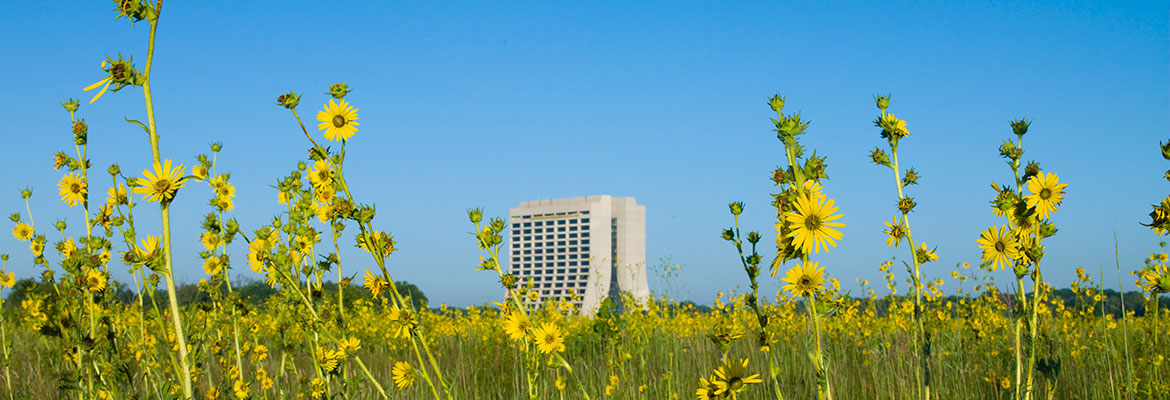Forests typically developed in the “fire-shadow” of large rivers, lakes or wetlands, or in the floodplain of rivers and streams.

Pictured here is Indian Creek Woods at Fermilab. This floodplain forest is a wetland and an example of a high-quality aquatic resource per the United States Army Corps of Engineers. Floodplain forests are found adjacent to streams and are dominated by silver maple (Acer saccharinum), swamp white oak (Quercus bicolor), cottonwood (Populus deltoides), and green ash (Fraxinus pennsylvanica var. subintegerrima). Photo credit: R. Campbell
The forest community class is dominated by trees, with an average canopy cover of greater than 80%. Forest communities have a multilayered structure composed of the canopy, sub-canopy, shrub, and herbaceous layers. Soils can be deep, loamy and dry (upland forest) to saturated and anoxic (floodplain forest and flatwoods). Prior to European settlement, forests typically developed in the “fire-shadow” of large rivers, lakes or wetlands or in the floodplain of rivers and streams. Fire intensity was typically low, and frequency was less than woodlands or savannas. Canopy tree species are well represented in varying age classes from seedling to canopy-sized individuals. High-quality forest communities are imperiled systems globally.
Fermilab has many forest parcels in three subcategories. Upland forests are dominated by sugar maple (Acer saccharum), white and red oak (Quercus alba and Q. rubra, respectively), basswood (Tilia americana), and cherry (Prunus serotina) trees. Examples include Ed Center Woods and Morgan’s Woods. Floodplain forests are found adjacent to streams at Fermilab and are dominated by silver maple (Acer saccharinum), swamp white oak (Quercus bicolor), cottonwood (Populus deltoides), and green ash (Fraxinus pennsylvanica var. subintegerrima). Examples include Indian Creek Woods and Giese Woods. Flatwoods occur on level soil and have a perched water table. This community type seems to merge with wet-mesic forests. Floristic quality index in forest communities ranges from 9 to 72. Buckthorn (Rhamnus cathartica) and honeysuckle (Lonicera mackii) are the two primary invasive plant species severely affecting biodiversity in forests while others include: reed canary grass (Phalaris arundinacea), autumn olive (Elaeagnus umbellata), Japanese barberry (Berberis thunbergii), and garlic mustard (Alliaria petiolata). Prescribed fire are carried out every 3-5 years to maintain forest communities. However, annual burning should occur for several years after large-scale invasive species removal to promote native community recovery.

